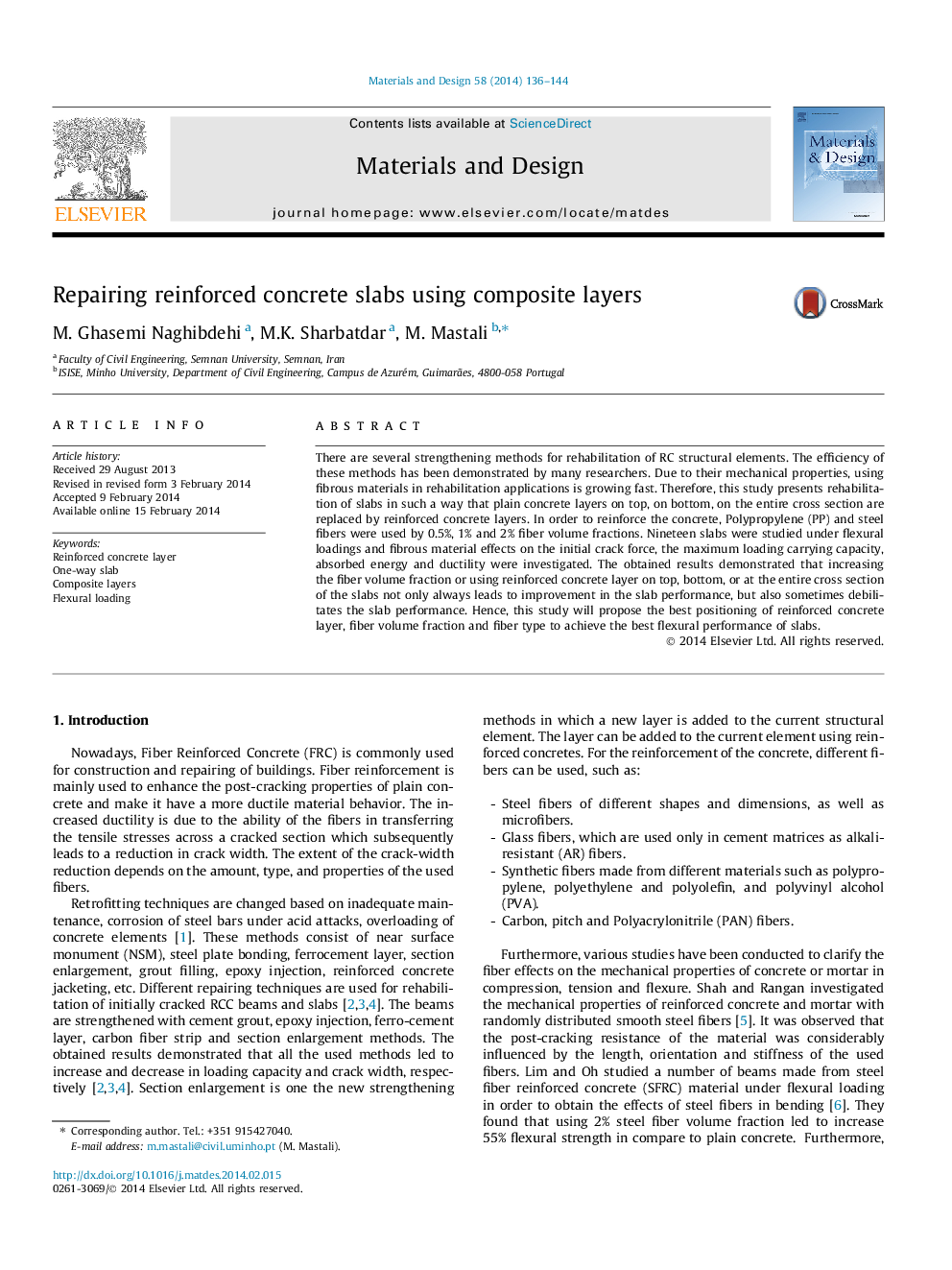| Article ID | Journal | Published Year | Pages | File Type |
|---|---|---|---|---|
| 829258 | Materials & Design (1980-2015) | 2014 | 9 Pages |
•Using PP fibers at the bottom layer led to the best slab performance in bending.•Using steel fiber at the top layer and entire cross-section led to the best slab performance.•Maximum increase in the initial crack force and loading were obtained at 2% steel fiber.•Maximum increase in the initial crack force and loading were obtained at 1% PP fiber.
There are several strengthening methods for rehabilitation of RC structural elements. The efficiency of these methods has been demonstrated by many researchers. Due to their mechanical properties, using fibrous materials in rehabilitation applications is growing fast. Therefore, this study presents rehabilitation of slabs in such a way that plain concrete layers on top, on bottom, on the entire cross section are replaced by reinforced concrete layers. In order to reinforce the concrete, Polypropylene (PP) and steel fibers were used by 0.5%, 1% and 2% fiber volume fractions. Nineteen slabs were studied under flexural loadings and fibrous material effects on the initial crack force, the maximum loading carrying capacity, absorbed energy and ductility were investigated. The obtained results demonstrated that increasing the fiber volume fraction or using reinforced concrete layer on top, bottom, or at the entire cross section of the slabs not only always leads to improvement in the slab performance, but also sometimes debilitates the slab performance. Hence, this study will propose the best positioning of reinforced concrete layer, fiber volume fraction and fiber type to achieve the best flexural performance of slabs.
